|
Displaying items by tag: knoedler & Company
With a trial looming, the Knoedler Gallery, its former director Ann Freedman, and Knoedler’s owner 8-31 Holdings have reached a settlement with the New York collector John Howard. Howard had bought a fake work by Willem de Kooning from the gallery for $4m. The lawsuit arose from Knoedler’s selling some $60m of fake Abstract Expressionist art in a scandal that sent shivers through the art world when it broke in late 2011.
Private equity titan Leon Black and his wife Debra, a Broadway producer, melanoma survivor and leading force behind the Melanoma Research Alliance, are buying 19 E. 70th St., the former Knoedler & Company art gallery, which shuttered following a major art fraud scandal in 2009 that is still under investigation.
London developer Christian Candy bought the 30-foot-wide, 17,000-square-foot, 104-year-old Italian Renaissance-style townhouse for $35 million in 2013.
In his first television interview, the elderly artist whose look-alike paintings in the styles of Abstract Expressionists including Mark Rothko and Jackson Pollock fooled experts and sent shock waves through the art world claims he was ”shocked” to learn that his works were sold as newly discovered masterpieces to wealthy collectors for tens of millions of dollars.
“When I made these paintings, I had no idea they would represent them as the real thing to sell,” said Pei Shen Qian in an interview to be broadcast Tuesday on “World News With Diane Sawyer” and “Nightline” as part of an ABC News investigation of the fake art industry and the Long Island fraud ring that flooded the market with over $80 million in forged work.
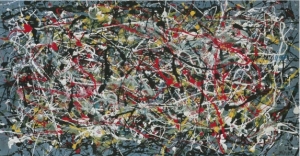
Three men were charged on Monday, April 21, in connection with a forgery scam led by the Long Island-based art dealer, Glafira Rosales. During the fifteen-year scheme, Rosales and her accomplices sold counterfeit works that mimicked the styles of modern masters, including Jackson Pollock, Willem de Kooning, and Mark Rothko, through well-known galleries such as the now-shuttered Knoedler & Company gallery in New York. Rosales and her camp swindled unsuspecting customers out of more than $33 million.
Among the trio was the Queens-based painter Pei Shen Qian, who allegedly made the forgeries and is believed to have fled to China. Qian, who has been charged with wire fraud conspiracy, wire fraud, and making false statements, faces up to 45 years in prison if he is convicted. Brothers Jesus Angel Bergantinos Diaz and Jose Carlos Bergantinos Diaz were arrested last week in Spain. Jesus faces up to 80 years in jail and Jose faces a maximum sentence of 100 years behind bars. Rosales, who already pleaded guilty, is awaiting sentencing. She faces up to 99 years in prison.
Manhattan US Attorney, Preet Bharara, said, "Today's charges paint a picture of perpetual lies and greed...With today's Indictment, the defendants must now answer for their alleged roles as modern masters of forgery and deceit.”
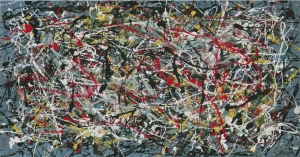
Glafira Rosales, a 56-year-old Long Island-based art dealer has been arrested in connection to the scandal surrounding the disgraced Manhattan gallery, Knoedler & Company. One of many suits stemming from the ongoing Knoedler drama, federal authorities charged Rosales with tax fraud following the discovery that a collection of Modernist masterpieces, which sold for millions of dollars were actually forgeries.
Prosecutors claim that Rosales never disclosed the $12.5 million she made off of the sale. It was also discovered that she maintained a bank account in Spain where she had stashed much of her earnings from the transaction. If convicted on all counts, Rosales faces as many as 34 years in prison but based on federal sentencing guidelines, will most likely receive much less.
Rosales began selling forged works through the offices of Knoedler & Company in the mid-1990s. The works were new to the market and they were said to have come from an unnamed collector based in Zurich and Mexico City. Knoedler accepted the works and proceeded to sell them, bringing millions of dollars in revenue. After multiple experts claimed that Knoedler was selling fakes, the F.B.I. launched an official investigation. Knoedler closed in 2011 after 165 years in business. The company, which had been New York’s oldest gallery, found itself at the center of 6 lawsuits filed by clients who had purchased Rosales’ works.
While tax evasion charges have been leveled against her, Rosales still has not been charged with knowingly selling counterfeit artworks.
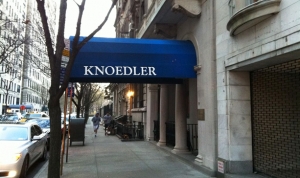
Prominent Canadian art collector David Mirvish filed a lawsuit on Friday, February 22, 2013 against the disgraced New York-based art gallery, Knoedler & Company. Since closing its doors in late 2011, Knoedler & Company has been accused by multiple clients of selling forged paintings, which were acquired by the gallery from Long Island dealer Glafira Rosales. Mirvish’s is the fifth lawsuit against Knoedler since 2011.
However, Mirvish’s claim is slightly different than its predecessors. While the other lawsuits accused Knoedler of passing off fake Jackson Pollock (1912-1956), Robert Motherwell (1915-1991), and Mark Rothko (1903-1970) paintings as the real deal, Mirvish claims that the works he purchased from the gallery were authentic. Instead, Mirvish is arguing that he lost out on millions of dollars in profits when Knoedler failed to sell three Jackson Pollock masterpieces he purchased jointly with the gallery.
Between 2002 and 2007 Mirvish purchased two paintings attributed to Pollock and bough a half stake in a third for $1.6 million. The sole purpose of Mirvish’s dealings with Knoedler was to resell the works for a profit. One of the Pollock paintings sold to collector and hedge fund manager Pierre Lagrange for $17 million in 2007, but in 2011, the day before Knoedler shut down, Lagrange announced that he would be filing a lawsuit against the gallery as forensic testing suggested the painting was a fake. The Lagrange suit was eventually settled but Mirvish was not involved and refused to return the money he made off of the deal.
Mirvish is now seeking reparations for the two unsold Pollocks, claiming that Knoedler breached its agreement when the gallery suddenly went out of business. Mirvish is asking Knoedler to return the two paintings, referred to as “Greenish Pollock” and “Square Pollock,” as well as reimburse him for his $1.6 million stake in the third painting, referred to as “Silver Pollock.” Even though Mirvish only paid Knoedler $3.25 million, half of “Greenish Pollock” and “Square Pollock’s” purchase prices, he claims that Knoedler’s violation of contract entitles him to both paintings.
Nicholas Gravante, the lawyer of Knoedler’s former president, Ann Freeman, is representing Mirvish. Freeman is not named as a defendant in Mirvish’s case and she has maintained that all works acquired from Rosales are genuine. Rosales is currently under investigation by the F.B.I.
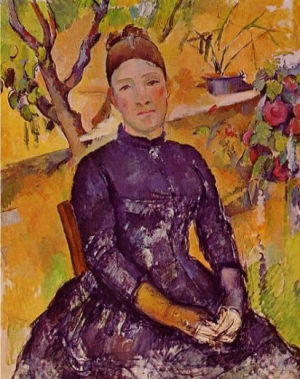
In December 2010, Pierre Konowaloff, the heir to Russian art collector Ivan Morozov, filed a lawsuit claiming that he was the rightful owner of Paul Cézanne’s (1839-1906) painting Madame Cézanne in the Conservatory (1891), not the Metropolitan Museum of Art. Konowaloff explained that Morozov’s art collection was seized by the Bolshevik regime in 1918 and that when Stephen Clark, the collector and museum trustee who bequeathed the work to the Met in 1960, first bought the painting from Knoedler & Company in 1933, he did not carry out due diligence. Accusing the Met of wrongful acquisition, possession, display and retention, Konowaloff demanded that the work be returned to him and requested restitution for monetary damages.
On December 18, a judge in the 2nd District Court of Appeals in Manhattan ruled that the Met could keep the Cézanne masterpiece, as the museum remains the work’s rightful owner. The Met has stood behind their right to the painting since the beginning of the entanglement with Konowaloff. The lawsuit was initially dismissed in 2011 by judge Shira Scheindlin who said that a U.S. court has no basis for questioning a decision made by a foreign government on distant soil. After the rejection of Konowaloff’s appeal, Met officials can finally leave the dispute behind them.
Konowaloff filed a similar suit against Yale University in 2009 over Vincent van Gogh’s (1853-1890) The Night Café (1888). Konowaloff claimed that the van Gogh painting was also stolen during the Russian Revolution and bought by Clark regardless of its questionable history.
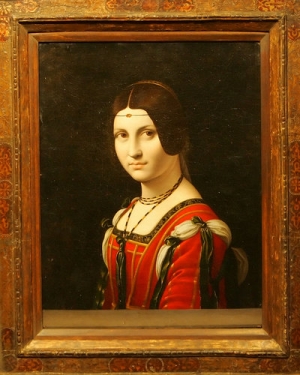
Federal District Court Judge Paul G. Gardephe’s résumé includes many impressive accomplishments but not an art history degree. Nonetheless he has been asked to answer a question on which even pre-eminent art experts cannot agree: Are three reputed masterworks of Modernism genuine or fake.
Judge Gardephe’s situation is not unique. Although there are no statistics on whether such cases are increasing, lawyers agree that as art prices rise, so does the temptation to turn to the courts to settle disputes over authenticity. One result is that judges and juries with no background in art can frequently be asked to arbitrate among experts who have devoted their lives to parsing a brush stroke.
The three cases on Judge Gardephe’s docket in Manhattan were brought by patrons of the now-defunct Knoedler & Company who charge that the Upper East Side gallery and its former president Ann Freedman duped them into spending millions of dollars on forgeries.
The judge’s rulings may ultimately rely more on the intricacies of contract law than on determinations of authenticity. But the defendants and plaintiffs are busily assembling impressive rosters of artistic and forensic experts who hope to convince the judge that the works — purportedly by Jackson Pollock, Willem de Kooning and Mark Rothko — are clearly originals or obvious fakes.
Of course judges and juries routinely decide between competing experts. As Ronald D. Spencer, an art law specialist, put it, “A judge will rule on medical malpractice even if he doesn’t know how to take out a gallstone.” When it comes to questions of authenticity, however, lawyers note that the courts and the art world weigh evidence differently.
Judges and juries have been thrust into the role of courtroom connoisseur. Legal experts say that, in general, litigants seek a ruling from the bench when the arguments primarily concern matters of law; juries are more apt to be requested when facts are in dispute.
|
|
|
|
|